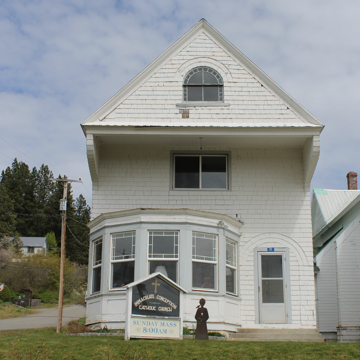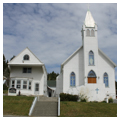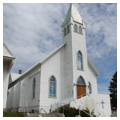The Immaculate Conception Church was one of the first community structures built during the construction boom of the late 1880s. It overlooks Roslyn from the east hill, approximately four blocks east and north from the downtown core in the oldest residential section of town.
Roslyn featured a sizable Catholic community due to the high percentage of Italian and “Austrian” immigrants—the latter mostly Slovenes, Croatians, Hungarians, and Czechs but listed as Austrian in the official census records due to their immigration from the lands of the Austro-Hungarian Empire. The church features a gable roof and a tower with a pyramidal roof, shiplap siding, and lancet arch windows with Gothic-arched sash windows. The adjacent two-story, wood-shingled rectory includes a prominent gable projecting over a polygonal bay window. Prior to the construction of the church, supervised by the Reverend L. Kusters, services were held in parishioner’s homes, with church officials traveling first from Ellensburg and then from nearby Cle Elum, until Reverend P. Kornke supervised the construction of the rectory in 1900. Both the church and rectory are still in use today.





















